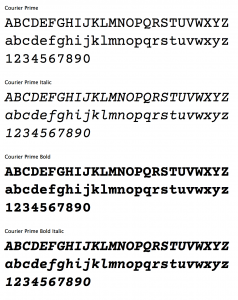At an extremely remote Antarctic outpost,Watch Sexy Tutoring Class Online scientists have unearthed a pristine sample of our planet's history.
It's an ice core 2,800 meters, or some 1.7 miles, long. But it's not just the length that's so significant. The ice contains preserved pockets of Earth's air from some 1.2 million years ago, if not more. Previous ice cores provided direct evidence of our planet's climate and environment from up to 800,000 years ago.
So, this is a giant leap. The team drilled so deep they reached the continent's bedrock.
"We have marked a historic moment for climate and environmental science," Carlo Barbante, a polar scientist and coordinator of the ice core campaign called "Beyond EPICA - Oldest Ice," said in a statement.
SEE ALSO: If a scary asteroid will actually strike Earth, here's how you'll knowAn international group of researchers excavated the ice at Little Dome C Field Camp in Antarctica, located 10,607 feet (3,233 meters) above sea level. They beamed radar down into the subsurface and used computer modeling of the ice flow to determine where this ancient ice was likely to be. And they were right.
This was no easy feat. Atop the Antarctic plateau, summers average minus-35 degrees Celsius, or minus-31 degrees Fahrenheit.
 The location of Little Dome C research base in Antarctica. Credit: Beyond EPICA / EU
The location of Little Dome C research base in Antarctica. Credit: Beyond EPICA / EU  Ice core drilled from the recent Beyond EPICA - Oldest Ice expedition. Credit: Scoto © PNRA / IPEV
Ice core drilled from the recent Beyond EPICA - Oldest Ice expedition. Credit: Scoto © PNRA / IPEV Although paleoclimatologists, who research Earth's past climate, have reliable methods of indirectly gauging our planet's deep past — with proxies such as fossilized shells and compounds produced by algae — direct evidence, via direct air, is scientifically invaluable. For example, past ice cores have revealed that the heat-trapping carbon dioxide levels in Earth's atmosphere today have skyrocketed — they're the highest they've been in some 800,000 years. It's incontrovertible evidence of Earth's past.
Scientists expect this even older ice core, however, will reveal secrets about a period called the Mid-Pleistocene Transition, lasting some 900,000 to 1.2 million years ago. Mysteriously, the intervals between glacial cycles — wherein ice sheets expanded over much of the continents and then retreated — slowed down markedly, from 41,000 years to 100,000 years.
"The reasons behind this shift remain one of climate science's enduring mysteries, which this project aims to unravel," the drilling campaign, which was coordinated by the Institute of Polar Sciences of the National Research Council of Italy, said in a statement.
This Tweet is currently unavailable. It might be loading or has been removed.
Now, the drilling is over. But the campaign to safely transport the ice back to laboratories, and then scrutinize this over-million-year-old atmosphere, has begun.
"The precious ice cores extracted during this campaign will be transported back to Europe on board the icebreaker Laura Bassi, maintaining the minus-50 degrees Celsius cold chain, a significant challenge for the logistics of the project," explained Gianluca Bianchi Fasani, the head of ENEA (National Agency for New Technologies, Energy, and Sustainable Economic Development) logistics for the Beyond EPICA expedition.
These historic ice cores will travel in "specialized cold containers" as they ship across the globe, far from the depths of their Antarctic home.
 Astronomers saw one galaxy impale another. The damage was an eye
Astronomers saw one galaxy impale another. The damage was an eye
 When Agatha Christie Was Investigated by MI5 by Sadie Stein
When Agatha Christie Was Investigated by MI5 by Sadie Stein
 Brother Sun by Michael Signorelli
Brother Sun by Michael Signorelli
 Crying While Reading by Sadie Stein
Crying While Reading by Sadie Stein
 NYT Connections Sports Edition hints and answers for May 19: Tips to solve Connections #238
NYT Connections Sports Edition hints and answers for May 19: Tips to solve Connections #238
 Twitter struggles to pronounce new coronavirus treatment bamlanivimab
Twitter struggles to pronounce new coronavirus treatment bamlanivimab
 Gravity Falls creator has the best troll of Trump's voter hotline yet
Gravity Falls creator has the best troll of Trump's voter hotline yet
 Courier Font Is Improved, and Other News by Sadie Stein
Courier Font Is Improved, and Other News by Sadie Stein
 Google Pixel Buds Pro 2: $40 off at Amazon
Google Pixel Buds Pro 2: $40 off at Amazon
 Dr. Seuss’s Hats, and Other News by Sadie Stein
Dr. Seuss’s Hats, and Other News by Sadie Stein
 This fat bear's before and after photos are stunning
This fat bear's before and after photos are stunning
 When Agatha Christie Was Investigated by MI5 by Sadie Stein
When Agatha Christie Was Investigated by MI5 by Sadie Stein
 Bovary and the City by Sadie Stein
Bovary and the City by Sadie Stein
 Bookish Heroism, and Other News by Sadie Stein
Bookish Heroism, and Other News by Sadie Stein
 A worthless juicer and a Gipper-branded server
A worthless juicer and a Gipper-branded server
 People across the United States celebrate Joe Biden's presidential win
People across the United States celebrate Joe Biden's presidential win
 Dear Enemy by Sadie Stein
Dear Enemy by Sadie Stein
 Back on the Shelf: At the Seminary Co
Back on the Shelf: At the Seminary Co
 Astronomers saw one galaxy impale another. The damage was an eye
Astronomers saw one galaxy impale another. The damage was an eye
 Love in Amish Country by Rachel Yoder
Love in Amish Country by Rachel Yoder
Apply Directly to the ForeheadDinner with a War CriminalGet Out of the VanFace ValueFirst as Tragedy, Then as FascismUnpopular ContentPacers vs. Knicks 2025 livestream: Watch Game 3 of NBA playoffs for freeThe FBI: A Love StoryDivining ComedyChoosing BattlesChoosing BattlesHello, beautiful: This new 65Judge DreadGet Out of the VanThe Plastic Paddy’s LamentSpiders may sleep, and dream, like humansBusy Doing NothingWe Can’t Go on like ThisAn Odd CouplingAn Odd Coupling Boeing Starliner arrives at ISS 20+ best early Father's Day deals 2024 NASA's Mars Perseverance rover films dust devil mayhem The most mysterious asteroids in the solar system Apple Maps: Topographic maps announced at WWDC 2024 See NASA's tenacious Ingenuity helicopter soar over Mars Tesla, Huawei, Xiaomi introduce new incentives as China’s EV price war continues · TechNode Google Pixel Tablet deal: Get $100 off at Amazon Rocket launch marks first key test for NASA moon base Resilient star survives a giant supernova explosion Get an Apple Watch Series 9 for $100 off at Amazon How NASA's Venus probe will survive hell and make unprecedented discoveries Astronomer captures image of the huge, mile Google's Tensor G5 processor to enter tape NASA spacecraft zooms over Jupiter's swirling clouds at 131,000 mph NASA's Mars Curiosity rover spots rocks resembling fingers Best camping deals June 2024: Save on camping gear at Amazon Mars' Hope orbiter discovers green aurora stretching thousands of miles The vital telescopes discovering Earth China’s Zhihu introduces AI tool to respond to users’ questions · TechNode
2.1819s , 10132.296875 kb
Copyright © 2025 Powered by 【Watch Sexy Tutoring Class Online】,Creation Information Network